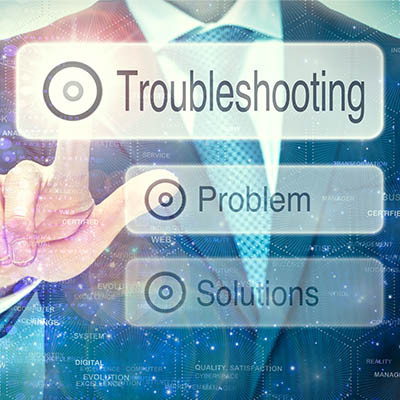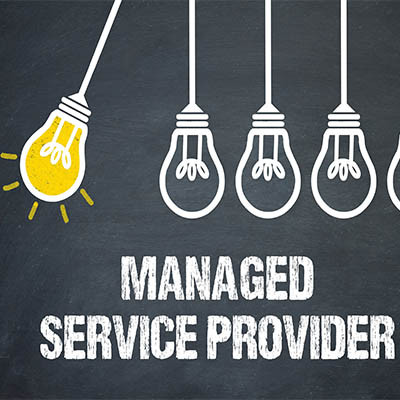ImageSys LLC Blog
When you suffer from a technical difficulty, it’s your responsibility to ensure that it is handled in a timely fashion, whether it is reporting the issue to IT or taking care of it yourself. The process of troubleshooting, however, can save you from waiting around while IT tinkers with your device’s settings. Let’s examine the five stages of troubleshooting and how you might try them yourself.
In certain industries that are steeped in tradition, it can often be challenging to meet the stringent security requirements in order to keep up with modern threats. Take, for example, the modern law firm. Just how does a law firm go about securing its data and technology, and what must be considered when implementing security solutions for these types of organizations?
There are generally two approaches to technology maintenance. One of them addresses issues as they appear, and the other involves addressing possible issues before they become operational problems. How does your business go about technology maintenance? If it’s the first, also known as “break-fix” IT, then you are going about things the wrong way and leaving a ton of savings on the table.
When it comes to your business technology, you shouldn’t settle for anything less than the best. Unfortunately, technology is one facet of running a company where many business owners feel they have the least amount of control, perhaps due to its many moving parts and overwhelming complexity. The question becomes one of how you want to approach managing your business’ technology and finding the right skill sets to do so.
No one likes to imagine the worst-case scenario, but as a responsible business owner, you have no choice but to see the bad before the good. After all, the investments that you make in the future of your organization mean nothing if you have no power to preserve it in the event of unfortunate circumstances. Due to the nature of technology, it is an ideal place to start thinking about preventative and proactive measures to keep your future secure.
Small businesses are often in a precarious position with technology management, struggling with budgeting and acquisition of new technology as well as the difficulties that come with hiring top talent. Thankfully, they have an ace up their sleeves that allows them to stay competitive: managed IT services. With a great managed service provider helming their technology strategies, small business owners have a lot less to worry about than they might otherwise… at least in terms of their technology, anyway.
Regardless of what your business does, there is a good chance that it relies pretty heavily on technology. When that technology falters, so does your business. Sure, this might be for a couple hours at a time, but it all adds up and has a major impact on the success of your business. Many organizations have outsourced their IT support and management, but could benefit from a more proactive approach than the one they currently employ. Today, we will take a look at some of the priorities that businesses should consider when choosing an outsourced IT provider.
If you’re seeking out an IT resource to assist your business in maintaining its all-important technology resources, you’re almost certainly seeking out the option that will give you the greatest return on your investment in terms of value. There is no denying that we are biased in our opinion, but that doesn’t change the fact that—dollar for dollar—the investment you make into managed services will always be the best choice.
When a component of your business is as foundationally important as your technology infrastructure is, ensuring it operates effectively is imperative to your organizational success. However, this isn’t always as simple as it sounds. Let’s go over what this means for your business and how this challenge can be addressed.
Shadow IT is a big problem in today’s business, but not a lot of people know about it. As powerful as technology can be if it is left unmonitored, it can run into problems. Shadow IT is unmonitored technology because it is brought onto a network without an IT administrator’s knowledge. Today, we talk a little bit about fighting shadow IT and how to get your staff on board.
Other than matters of scale, most businesses have very similar needs when it comes to their hardware. As a result, many of the considerations businesses need to make are the same, regardless of their size. This week, we’re sharing some of these considerations to help you more effectively plan for any upcoming hardware implementations.
So far, 2020 has been a bust, especially for businesses. The challenges that business owners have seen this year have been considerable to say the least: not only have there been economic and political tensions creating roadblocks, we’re now all dealing with the ramifications of an actual pandemic event. If any business is going to make it through all this, there needs to be a few shifts in how business technology is handled from this point on.
Only a few months into the year, it has been made abundantly clear that 2020 will be considered one of the tougher years for business in recent memory. With a pandemic leading many, many businesses to scale back drastically (if not shut down outright), there are many things that are bound to change. To give your own the best chance of survival, there is perhaps no more appropriate time to consider a change over to a managed approach to IT services.
The COVID-19 pandemic is one of the most remarkable situations that will happen in our lives. Unfortunately for businesses, mandated stay-at-home orders for non-essential workers have pushed a lot of the work that typically was done in the office to employees’ homes. This has necessitated many businesses to make a quick digital transformation.
To make any business decision, you must weigh the pros and the cons of your options. This includes when you may be considering managed services as your support method. As we are admittedly biased in favor of you adopting managed services, we wanted to review just a few ways a managed service agreement can help you optimize some critical business considerations.
Your business runs on technology of all types. That’s why it is so important to have knowledgeable and reliable IT technicians whose job is to keep that technology running effectively. Finding the right IT support for your company’s needs isn’t as straightforward as you may think. There are costs, reliability, and coverage variables to sort through and after those determinations are made, it is up to business owners and managers to ensure they are getting value from their choice in IT support.
While most businesses need the same basic technology to support their operations, some industries have additional, more specific needs that require a more specialized tool to accomplish. As we leave this series behind, let’s briefly consider how a managed service provider can be a valuable resource for a business operating in one of these industries.




















